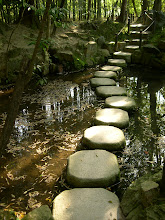uncut forests store about three times the amount of carbon as those that have been planted (plantation forests). The report questions the use of plantation forests in international carbon trading schemes and suggests that there is a need to protect older forests. Click here for a PDF of the full report.
This report calls into question the effectiveness of some of the recent activities in Japan focused on tree planting and carbon offsetting. See the Gaia Initiative's +1 Forest Program.
Approximately 67% of Japan's land area is comprised of "forest" that was heavily cut in the post-war period. Therefore, a large portion of the area is plantation (comprised mostly of cypress and cedar trees). Importation of foreign wood has rendered domestic trees unprofitable and so there is now an overabundance of plantation forests that are simply being abandoned, which is creating a host of new ecological problems for mountain villages (animal pestilence being perhaps the most visible).
At the same time, new global discourses focused on climate change have become very prominent in Japanese popular culture and there is a new "eco" craze, rooted mostly in urban areas. Part of being "eco" means planting as many trees as possible ("let's carbon offset"). The
national forest agency has picked up on this discourse and so tree planting is given legitimacy. The problem is that the trees selected for planting are often the same plantation varieties of which there is already an overabundance. In other words, "eco" discourses give legitimacy to, and seem to even encourage, tree planting that is at best ineffective and at worst ecological disastrous. But, no one seems to think past the discourse: organizations take photos of members planting trees, businesses offer sponsorship, and the forest agency boasts about efforts to combat climate change.

national forest agency has picked up on this discourse and so tree planting is given legitimacy. The problem is that the trees selected for planting are often the same plantation varieties of which there is already an overabundance. In other words, "eco" discourses give legitimacy to, and seem to even encourage, tree planting that is at best ineffective and at worst ecological disastrous. But, no one seems to think past the discourse: organizations take photos of members planting trees, businesses offer sponsorship, and the forest agency boasts about efforts to combat climate change.









No comments:
Post a Comment